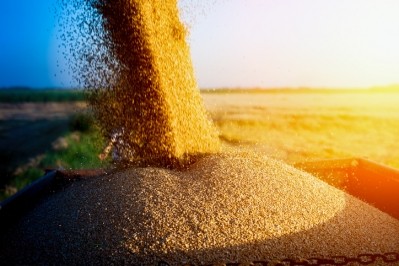Continued growth in poultry feed demand in Indonesia, but corn supply problematic

The forecast is slightly down on the previous estimate of 9.5 mm tons to reflect lower supply of corn from domestic production, said the attachés who compiled the report.
The Ministry of Agriculture (MOA) in Indonesia bans corn imports for poultry and livestock feed, forcing feed mills to buy high priced domestic corn to meet energy needs in feed rations. It also ‘unofficially’ restrict imports of wheat for feed use by feed mills, limiting the issuance of import recommendations exclusively to flour mills.
Growth of feed production in Indonesia is expected to outpace increases of corn production though, noted the authors, who warned that Fall Armyworm has arrived in Indonesia, spreading throughout Sumatera and West Java and threatening corn output.
Corn production is revised downward accordingly, from 12.6m tons to 12m tons, to reflect declining yields arising from the infestation, they said.
Fall Armyworm is an invasive species, which attacks cereal crops including corn and rice; it originates from tropical climates in the Western Hemisphere and has spread in recent years to West Africa, India and Southeast Asia. Recent reports from Thailand indicate the pest is already present in 50 of 77 provinces and is expected to affect about one-third of corn area, reducing production by 20-30%, as per the US agency’s update.
“A similar impact in large corn producing areas of Indonesia could result in further shortages of local corn for the feed sector, resulting in higher food prices,” cautioned the USDA market specialists.
Feed mill profits margins being eroded
Indeed, rising domestic corn prices have already reduced feed mills’ profit margins, they added.
“Difficulties in meeting demand for energy sources in feed due to domestic corn supply shortages and high prices have reduced the amount of corn in feed rations to 30-40%, compared to 50-60% in 2016. The gap is filled by wheat and premixes.”
The USDA said corn imports for 2018/19 are expected to reach 800,000 tons.
Steep corn prices in October and November, reaching as high as $435/ton at the farmer level, resulted in the Indonesian government temporarily lifting the corn import restrictions in place for feed use, allowing imports through State-owned agency BULOG. The imported corn was distributed to smallholder farmers for feed.
Of the 100,000 tons authorized in November 2018, a total of 99,000 tons arrived in country. Failing to reduce prices and under pressure from feed mills, in January 2019, the government again authorized BULOG to import corn for feed use without any limiting quota through to March 31, 2019, reported the USDA team.
The timeline for import is aimed at avoiding the imported corn arriving at the same time as the main domestic harvest, they said. A total of 175,000 tons of additional imports have arrived in the Asian country. BULOG expects to distribute all of the corn imports by the end of this month, added the USDA experts.
Domestic corn demand exceeds supply for a few other reasons, they noted.
"Domestic production, while increasing, faces challenges due to inconsistent seasonal supplies, inadequate storage and drying facilities, infrastructure bottlenecks, and poor post-harvest management resulting in high moisture content and high aflatoxin levels.
“Recent increases in production area have mostly occurred in places far away from feed mills. Transportation costs to deliver corn from those areas to feed manufacturing areas such as Java and Sumatera is sometimes more expensive than exporting the corn to neighboring countries.”








